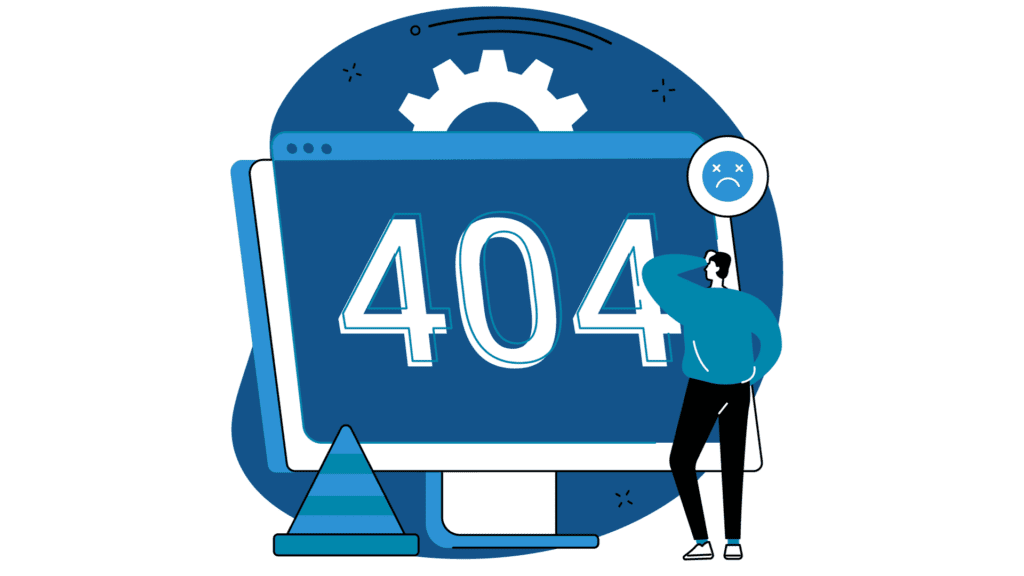Last Updated: September 26, 2023
Do you have any idea that 🤔
Why is an effective membership pricing model so crucial, and how does pricing impact the growth of memberships in various organizations and businesses?
Whether it’s a loyalty program, an exercise center, a business network, or a streaming service, memberships are a great way to get people to stick with you and build relationships that last.
However, the success of any membership-based organization depends a lot on one important thing: PRICING!
📚 Why You Should Read This? 📚
Curious about what membership pricing models are? We’ll decode their secrets, explaining how and why they’re used, so you can make the most of them.
We are ready to expose you to everything you wonder about member pricing, please keep scrolling!
🔑 Key Points We’ll Explore:
- What Is a Membership Pricing Model?
- Factors to Consider When Setting Membership Prices
- Common Mistakes to Avoid in Membership Pricing
- 10 Types of Membership Site Pricing Models
- How to Figure Out What to Price For Your Membership Site
- What Is a Membership Pricing Strategy?
- 2 Most Common Membership Pricing Strategies
💡 The Importance of Effective Membership Pricing

Setting the right price for membership is a complex strategy that can make or break an organization’s ability to grow and stay in business.
It’s not enough to just set a fee; you need to understand how the value you provide and the cost of membership affect each other in complex ways.
By knowing this, organizations can get new members, keep the ones they already have, and eventually do well in their fields.
💡 How Pricing Impacts Membership Growth

We’ll get into the complicated world of pricing methods and how they affect membership growth in this look at membership prices.
We’ll look at how price can be a moving force that changes how people think, what they buy, and how engaged they are.
You’ll learn about the art and science of membership prices by the end of this talk.
🚀 Let’s start this journey by learning how important it is to set the right price for memberships and how that affects membership growth in a big way.
What Is a Membership Pricing Model?

So far, we’ve only told you briefly what we’re going to talk about. Let’s start with the membership price model!
Let’s find out what a membership price model is, shall we?
A membership pricing models are a structured way for organizations to figure out how much to charge people or businesses to access certain membership perks, services, or rights.
Here are some popular ways to set the membership pricing models
Fixed Pricing: In this simple model, every person pays the same fee, no matter how much they use the service or what they like.
It’s a simple method that makes sure everything is the same, but it might not take into account differences in how engaged members are.
Tiered Pricing: This model has different levels of membership, and each level comes with its own set of perks and prices.
Each member can pick the level that fits their needs, and besides membership based organizations, airlines and hotels frequently use this membership pricing model, with prices fluctuating depending on supply and the time of reservation. VIP passes.
Pay-As-You-Go: Members of certain organizations only pay for the services or perks they use.
One example of this would be a monthly box service that charges users based on the items they choose each month.
Freemium Model: In the freemium model, the basic level of participation is free, but you have to pay for extra benefits or better services.
It’s often seen in games, software programs, and digital content sites.
Dynamic or Demand-Based Pricing: Organizations can change the cost of memberships based on things like demand, the time of year, or how often people use the community.
Value-Based Pricing: In this method, the cost of a membership is linked to how valuable the person thinks they are.
It tries to make sure that the price is fair for the experiences and benefits that are provided.
Discounted or Incentive Pricing: Businesses can offer discounts, special deals, or bonuses to get people to sign up, repeat, or send others.
Short-term price cuts like these can help participation grow.
Group or Family Pricing: Some organizations offer lower prices for group memberships or family pricing to get more people from the same home to join.
Lifetime or Long-Term Memberships: These involve a one-time payment or a long-term commitment (like a yearly membership), which saves money compared to memberships that are renewed every month.
Factors to Consider When Setting Membership Prices
Setting membership prices is a difficult task and requires attention. We have listed the things you need to pay attention to when creating this.
Come on, take a look! 👀
Factor #1: Value Proposition
What’s most important is how valuable people think your membership program is. Make sure the perks, services, or benefits you offer are exactly what your target audience wants and is willing to pay for.
For the money they pay for participation, users should feel like they are getting a lot in return.
Factor #2: Market Research and Competitive Analysis
Do a lot of market research to find out what your target audience wants and what prices they expect to pay.
To set your membership fees competitively, look at how your competitors set their prices. You need to find a way to stay competitive in your area or business while also adding value.
Factor #3: Costs and Financial Viability
First, figure out how much it costs to provide club benefits and services. The fees people pay to join the organization should cover these costs and help it stay in business.
To set a price that makes money, you need to think about both fixed and changeable costs.
Factor #4: Member Segmentation

Know that your target audience may be made up of different organizations with different wants and needs.
You might want to use tiered prices to better serve different types of customers.
Offering choices for a range of prices and tastes can help this method bring in the most money and keep members happy.
Factor #5: Pricing Strategy Alignment
Pick a pricing strategy that fits with the purpose and goals of your business.
Your pricing strategy should be based on your unique value proposition and how you want to be seen in the market.
Pick a plan that works for your long-term growth goals and connects with your target audience.
Common Mistakes to Avoid in Membership Pricing

Are you scared of making simple mistakes?
Don’t be scared! We will help you avoid making these mistakes.
Any membership-based organization that wants to be successful must have effective membership prices.
However,
Organizations often make mistakes when they decide how much to charge for participation.
If you want to avoid these mistakes, read on:
❌ Setting Prices Arbitrarily
Don’t make the mistake of setting membership prices without thinking about costs, how the market works, and what members expect. Use data and research to help you decide how much to charge.
❌ Neglecting Value Perception
If you don’t match the price of your membership perks with how valuable people think they are, you might lose possible members. Keep talking about and improving the value offer to make the cost worth it.
❌ Underestimating Costs
If you set prices that are too low to cover the costs of providing benefits and services, you could end up with unstable finances. For longevity, make sure that the price includes all of the costs that come with it.
❌ Complex Pricing Structures
Members-to-be may not understand pricing structures that are too complicated and have a lot of levels, add-ons, or deals. To make things easier to understand, keep price systems simple and clear.
❌ Ignoring Competitive Analysis
If you don’t look into what other companies charge for similar contracts, you might set your prices too high or too low, which will hurt your ability to compete.
10 Types of Membership Site Pricing Models

Do you have questions about membership sites pricing model types?
Let’s fix these immediately and introduce you to 10 types of membership site pricing models!
- Fixed Price
In this membership price model, users pay the same amount on membership fees on a regular basis, like once a month or once a year; it’s a fixed pricing model with no pricing tiers.
No matter how much or how little a member uses the service, they will always pay the fixed pricing monthly membership fee rate.
- Tiered Pricing
This membership price model offers different levels of membership, each with its own multiple price points and its own membership fees and benefits.
At each level, you gain access to rare materials and new tools. Every person is free to choose the plan that fits his or her needs and budget the best.
- Pay-per-Content
With this type of pricing, users pay to get access to a limited number of tools or pieces of content. Different membership fees and additional costs are charged for each piece of content or set of content.
Subscribers can pick and choose the content they want to pay for with this type of business plan.
- All-Access Pass
With this plan, users pay only a one-time membership fee and can use all of the site’s features.
Members pay one price to get access to everything on the site.
- Bundled pricing
This plan is a way to sell a lot of things or educational modules at a discount instead of selling them all separately.
Members are urged to use a wider variety of services at lower cost, plus pricing membership fee.
- Free Membership
In this membership based pricing plan, the free membership tier doesn’t have access to the most basic features or materials.
You can pay for premium tools or access to exclusive content.
It is hoped that the free tier will bring in a lot of people who will then pay to get access to the premium features once they see how useful they are.
- Lifetime Membership
Members pay once and can use the site and all of its features as much as they want for the rest of their lives.
It appeals to members who would rather commit for a long time, and, unlike periodic recurring payments or plans, it may be able to charge a higher fee.
- Drip Content
Members get access to more and more things. Members pay a regular fee to get access to new information as soon as it comes out.
Because of this idea, members feel like they are important and look forward to future rewards.
- Community Pricing
The goal of this pricing model is to build a membership model and a website made by users.
There is an initial fee to join, and users pay more based on how active they are, how much they contribute, or how long they have been in the group.
It gives people a reason to get involved and shows appreciation for those who do.
- Loyalty Pricing
This approach gives discounts or other perks to customers who have been with the company for a long time or who keep their memberships.
It gives members a reason to keep their customers paying for their subscriptions for a longer time.
How to Figure Out What to Price For Your Membership Site
Setting the right prices for your membership site requires planning that takes many things into account.
💡 Tip: Keep in mind that you might have to try a few different prices before you find the best one for your membership site.
Here’s a step-by-step guide to help you figure out what to price for your membership site:
Understand Your Costs
- Make a list of all the costs that come with running your membership site. This includes the cost of making material, hosting it, keeping it up to date, handling payments, marketing costs, and any other costs related to running the business.
- Find out how much money your site needs to make in order to cover its costs and stay open.
Identify Your Value Proposition
- Make it clear what your membership site’s members will get out of it. Think about the type and amount of content, special offers, community participation, or anything else that makes your site unique.
- Find out how your value offer stacks up against those of other businesses in the same area.
Conduct Market Research
- Find out what your target group likes, what they need, and how much they are willing to pay. To learn more, use polls, conversations, and a study of your competitors.
- Check out how much other membership sites that are similar to yours charge and how they set their prices.

Choose a Pricing Model
- Pick a pricing plan that fits your audience and the material you wish to sell. Fixed pricing, tiered pricing, shareware, pay-as-you-go, and other methods are all common.
- Think about whether you want to offer free trials or deals to get people to sign up for the first time.
Determine Your Profit Goals
- Set goals for your profit margin and your sales. Are you trying to make a lot of money, or are you more interested in growing and entering new markets?
- Think about how your price plan fits in with these goals.

Price Flexibility
- Be ready to change your price approach over time based on what the market says and how things are going. Your membership site’s prices should change as it gets more popular.
- Regularly check on how engaged your members are and how well your price plan is working.
Legal and Regulatory Compliance
- Make sure that the way you set your prices follows all the laws and rules that apply in your business or area.
Competitive Positioning
- Think about where your membership site fits in the market based on how you set your prices. Are you trying to be a high-end service, a cheap one, or something in between?
What Is a Membership Pricing Strategy?

We think you understand what membership pricing and pricing models are so far.
Now we want to talk about membership pricing strategies to help you understand how to do this.
There should be a well-thought-out plan for how a group or business will set prices for its memberships. This is called a membership pricing strategy.
Key components of a membership pricing strategy typically include:
Pricing Models: You need to decide how to set prices in general, like whether to use fixed prices, tiered prices, dynamic prices, or other pricing models that fit the goals of the business and the tastes of its customers.
Pricing Levels: You should decide on the different membership levels or groups that will be available, each with its own perks and prices. Each level should be able to meet the wants and funds of an individual member.
Pricing Amounts: You have to set the real membership fees or charges for each level, taking into account things like costs, value, analysis of the competition, and how much members are ready to pay.
Discounts and Promotions: You can plan when and how to give discounts, promotions, or other benefits to get new members, renew members, or people to send new members, as well as the rules and restrictions that go along with these deals.
Long-Term vs. Short-Term Pricing: You can decide whether to charge different amounts for memberships that last a certain amount of time (monthly, yearly, or forever) and how these different price plans fit in with the organization’s financial goals.
2 Most Common Membership Pricing Strategies
Flat-Fee Pricing Model
With this pricing model, a membership program’s benefits and features are all included for a fixed price.
This simple method is easy and clear since all members pay the same monthly fee no matter how much they use the service or participate.
It is often used when the value of the perks of membership is the same for all members.
Key characteristics of the flat-fee pricing model include:
Simplicity: The pricing system is clear and simple because all members pay the same price. This makes the model easy to understand and use.
Uniform Access: No matter what type of membership a person has, they can use all the features and perks that are available to them.
Predictable Costs: Members know exactly how much they will be charged, which helps them plan their budgets for membership costs.
Value Consideration: The hard part for groups that use this plan is making sure that the value they offer is worth the flat fee for all members, no matter how involved they are.
Common Use Cases: These types of services usually have a flat-fee pricing plan. For example, all Netflix subscribers pay the same monthly fee and have full access to the library of materials.

Tiered Pricing Model
The tiered pricing model, which is also called the multi-level or multi-tier pricing model, has different levels of membership at different prices.
Each tier has a different set of features and advantages, so members can choose the level that best fits their needs and budget.
This model gives you the freedom to meet the needs of a wider range of customers with different tastes. It also lets businesses make more money by charging more for features or perks that are better or more valuable.
Key features of the tiered pricing model include:
Variety of Options: Members can choose a membership level that fits their needs and budget.
Customization: Each tier usually has a range of entry levels, perks, or features, so members can make their membership experience fit their needs.
Scalability: When organizations offer tiered prices, they can serve a wider range of people, from members on a budget to those who want the best services.
Value-based: People are willing to pay more for higher value based pricing because they think those levels offer more value or special perks.

10 Tips for Setting The Right Price For Your Membership Program
It’s important to set the right price for your membership program if you want to draw and keep members and make sure your group can stay in business.
Remember that you will have to keep looking for the best deal. Always ask members for feedback, and be ready to change your price plan to fit their changing wants and needs.
Here are ten tips to help you establish the optimal pricing strategy:
- Understand Your Costs
Figure out how much it costs to run your membership program, including the cost of making materials, keeping the platform up to date, marketing, and running the business. Make sure that these costs are included in your prices.
- Research Your Target Audience
Do a lot of market research to find out what your target audience wants, needs, and is willing to pay. To learn more, use polls, conversations, and a study of your competitors.
- Segment Your Audience
Keep in mind that different parts of your audience may have different funds and wants. Divide people into groups based on what they like, and then make price options that are specific to each group.
- Determine Your Value Proposition
Make it clear what makes your participation program special, and let people know about it. Draw attention to the unique benefits, materials, and features of your program that make it stand out from others on the market.
- Choose the Right Pricing Model
You can use set pricing, tiered pricing, freemium, or pay-as-you-go. Just make sure it works with your content and viewers. Think about whether you want to offer free trials or deals to get people to sign up for the first time.
- Analyze Your Competition
Find out how much other membership programs that are similar to yours charge and how they set their prices. This can help you figure out price standards and how to place yourself in the market.
- Pilot Testing
Do trial tests or “soft launches” with a small group of people if you can to see how they react to different price points. Use what they say to improve how you set your prices.
- Define Your Profit Goals
Set goals for your profit margin and your sales. Think about whether you want to focus on high profits or market penetration and growth.
- Factors in Member Retention
Look at old statistics on the rates of existing members renewal. When setting prices, the goal should be to keep customers for a long time and lower losses.
- Transparent Communication
Make it clear to potential and current users what the perks and value of your membership program are. Being clear about prices and perks builds trust and makes it easier to convert.
Final Words on Membership Pricing
Congratulations! 👏🏻👏🏻
You have come to the end of the article, and we hope you found everything you were looking for.
Briefly, what did we talk about?
Pricing is important because it reflects the perceived worth of membership management. These pricing techniques can influence consumer decisions, involvement, and commitment.
Pricing mistakes, including arbitrary pricing, neglecting value perception, underestimating expenses, using too complex price systems, and ignoring competition analyses, can be expensive.
Finally, a successful membership price is a balance between value delivery and financial feasibility.
FAQs about Membership Pricing
1-How should I determine the right price for my membership program?
To set the right price, you should think about how much it costs you, do market research to find out how much people are willing to pay, and make sure that your price matches how much people think your products are worth.
2-What pricing models work best for membership programs?
There are different ways to set prices, but some popular ones are fixed pricing (one fee for all users), tiered pricing (different levels with different costs and features), and freemium (free basic access with paid premium features). Each is good for a different case.
3-How can I avoid setting prices that are too high or too low?
Do a competitive analysis, make sure your pricing matches your value offer, and keep reviewing and changing your pricing based on market feedback and success to avoid making pricing mistakes.
4-Is offering discounts or promotions a good strategy for attracting members?
Yes, giving discounts or special deals for a short time can be a good way to get people to sign up, repeat, or refer others, as long as they fit with your general price strategy and financial goals.
5-What’s the importance of transparent communication in membership pricing?
Clear prices and open communication about the benefits and worth of your membership program build trust with both potential and current members, making it easier to get them to join and keep them.







